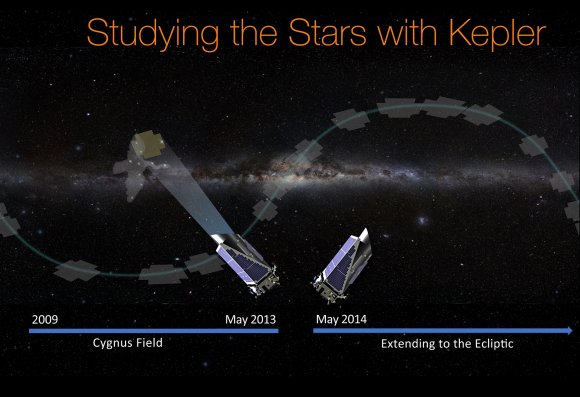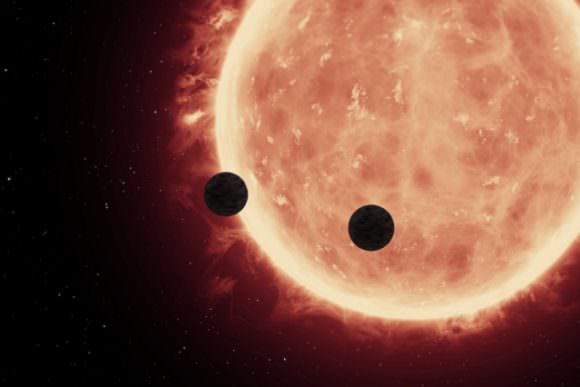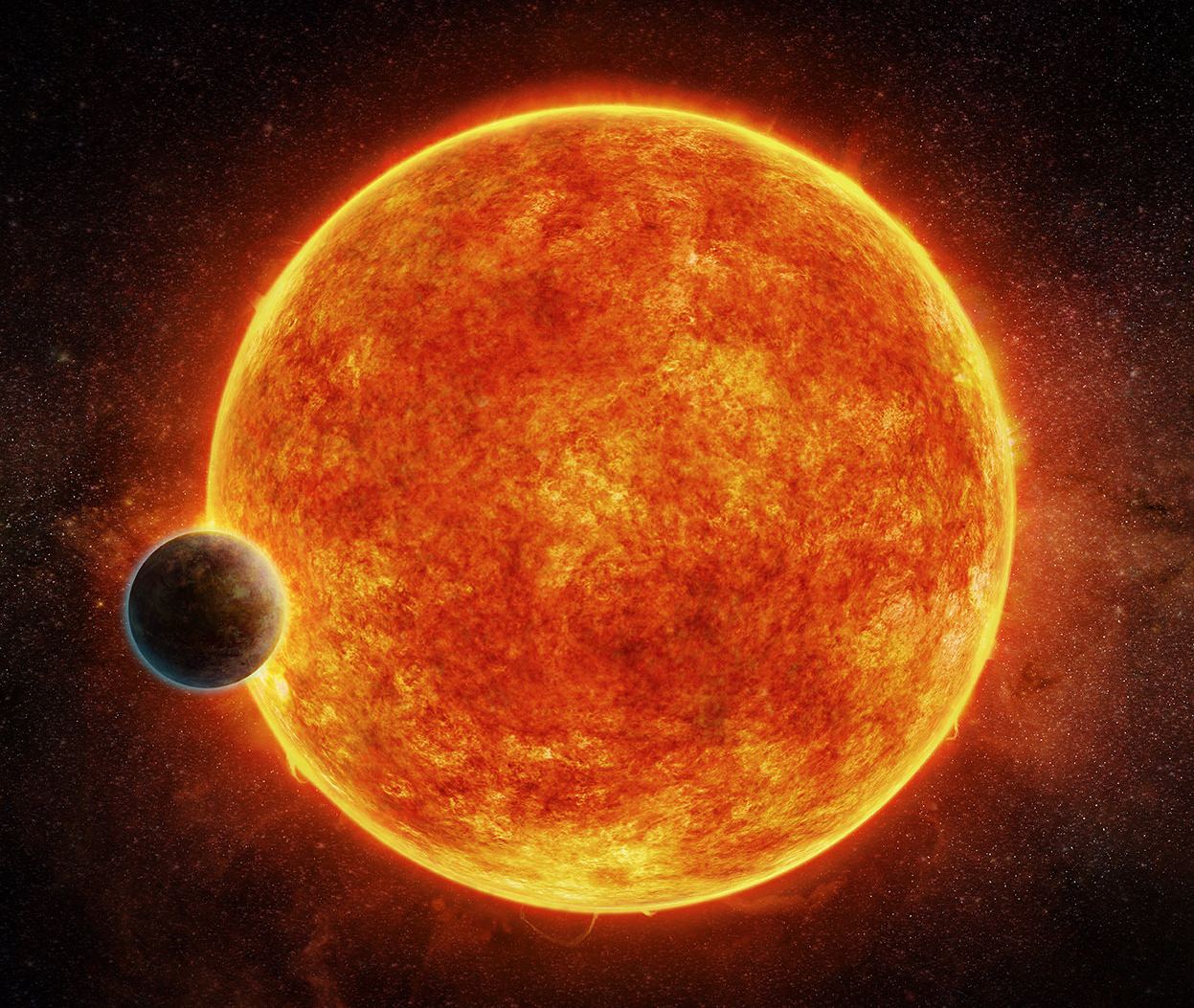The Kepler space observatory has made some interesting finds since it began its mission back in March of 2009. Even after the mission suffered the loss of two reaction wheels, it has continued to make discoveries as part of its K2 mission. All told, the Kepler and K2 missions have detected a total of 5,106 planetary candidates, and confirmed the existence of 2,493 planets.
One of the latest finds made using Kepler is EPIC 228813918 b, a terrestrial (i.e. rocky) planet that orbits a red dwarf star some 264 to 355 light years from Earth. This discovery raises some interesting questions, as it is the second time that a planet with an ultra-short orbital period – it completes a single orbit in just 4 hours and 20 minutes – has been found orbiting a red dwarf star.
The study, which was recently published online, was conducted by an international team of scientists who hail from institutions ranging from the Massachusetts Institute of Technology (MIT), the California Institute of Technology (Caltech), the Tokyo Institute of Technology, and the Institute of Astrophysics of the Canary Islands (IAC) to observatories and universities from all around the world.

As the team indicated in their study, the detection of this exoplanet was made thanks to data collected by numerous instruments. This included spectrographic data from the 8.2-m Subaru telescope and the 10-m Keck I telescope (both of which are located on Mauna Kea, Hawaii) and the Nordic Optical Telescope (NOT) at the Roque de los Muchachos Observatory in La Palma, Spain.
This was combined with speckle imaging from the 3.5-m WIYN telescope at the Kitt Peak National Observatory in Arizona, photometry from the NASA’s K2 mission, and archival information of the star that goes back over 60 years. After eliminating any other possible explanations – such as an eclipsing binary (EB) – they not only confirmed the orbital period of the planet, but also provided constrains on its mass and size. As they wrote:
“Using a combination of archival images, AO imaging, RV measurements, and light curve modelling, we show that no plausible eclipsing binary scenario can explain the K2 light curve, and thus confirm the planetary nature of the system. The planet, whose radius we determine to be 0.89 ± 0.09 [Earth radii], and which must have a iron mass fraction greater than 0.45, orbits a star of mass 0.463 ± 0.052 M and radius 0.442 ± 0.044 R.”

However, what is perhaps most surprising about this find is just how massive it is. Though they didn’t measure the planet’s mass directly, their constraints indicate that the exoplanet has an upper mass limit of 0.7 Jupiter masses – which works out to over 222 Earth masses. And yet, the planet manages to pack this gas giant-like mass into a radius that is 0.80 to 0.98 times that of Earth.
The reason for this, they indicate, has to do with the planet’s apparent composition, which is particularly metal-rich:
“This leads to a constraint on the composition, assuming an iron core and a silicate mantle. We determine the minimum iron mass fraction to be 0.525 ± 0.075 (cf. 0.7 for KOI 1843.03), which is greater than that of Earth, Venus or Mars, but smaller than that of Mercury (approximately 0.38, 0.35, 0.26, and 0.68, respectively; Reynolds & Summers 1969).”
Ultimately, the discovery of this planet is significant for a number of reasons. On the one hand, the team indicated that the constraints their study placed on the planet’s composition could prove useful in helping to understand how our own Solar planets came to be.
“Discovering and characterizing extreme systems, such as USP planets like EPIC 228813918 b, is important as they offer constraints for planet formation theories,” they conclude. “Furthermore, they allow us to begin to constrain their interior structure – and potentially that of longer-period planets too, if they are shown to be a single population of objects.”

On the other hand, the study raises some interesting questions about USP planets – for instance, why the two shortest-period planets were both found orbiting red dwarf stars. A possible explanations, they claim, is that short-period planets could have longer lifetimes around M-dwarfs since their orbital decay would likely be much slower. However, they are quick to caution against making any tentative conclusions before more research is conducted.
In the future, the team hopes to conduct measurements of the planet’s mass using the radial velocity method. This would likely involve a next-generation high-resolution spectrograph, like the Infrared Doppler (IFD) instrument or the CARMENES instrument – which are currently being built for the Subaru Telescope and the Calar Alto Observatory (respectively) to assist in the hunt for exoplanets around red dwarf stars.
Further Reading: arXiv


Hi Matt,
Really interesting article.
Did the researchers explain how a planet the same size as earth could possibly be as massive as 222 earths? Based on everything I’ve read or understand about planetary compositions and density I’m pretty sure it is not possible. The relatively weak gravity of an earth sized planet just isn’t strong enough to compress the elements to the required densities. If the Earth were 100% iron or nickel (the most common heavy elements), I estimate its mass could be at most 5 current Earth masses. If it is possible to reach 222x using the standard iron and silicates, I would certainly love to know what I’ve been missing all these years!
It’s the maximum possible mass, and the apparent explanation has to do with it being very metal heavy. However, the team are committed to making more accurate estimates soon using the radial velocity method. Chances are, its a lot closer in mass to Earth than being 70% of Jupiter’s,